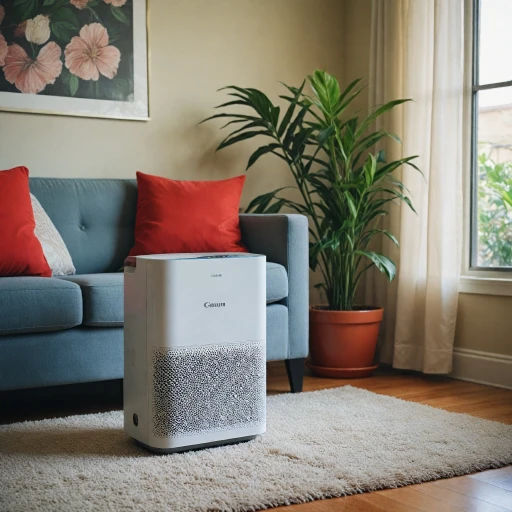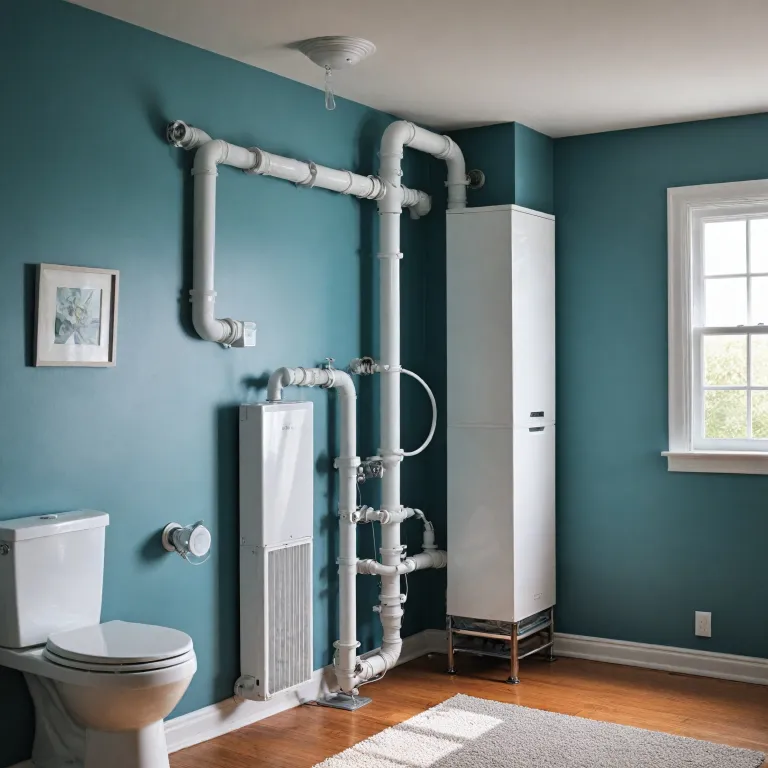The Basics of Mini Split Drain Lines
Understanding the Functionality of Mini Split Drain Lines
Mini split systems are a popular choice for air conditioning due to their efficiency and flexibility. However, one component that often goes unnoticed is the drain line. The drain line plays a crucial role in ensuring that your mini split system operates smoothly and maintains optimal air quality.
Mini split drain lines, often made from PVC pipe or flexible tubing, are responsible for removing condensate water that is produced by the indoor unit during the cooling process. The condensate forms when warm indoor air comes into contact with the cool evaporator coils within the air conditioner unit. As the air cools and moisture is extracted, the water needs a proper outlet to prevent any water damage or system malfunction.
For efficient removal of this condensate, the drain line is typically routed through the wall to an appropriate discharge location. A well-installed drain pipe system typically includes a slight downward slope, gravity guiding the water out. Benefitting from its flexible and long-lasting build, the drain hose or line mini can also be paired with a condensate pump for situations where gravity drainage is not feasible due to the unit's placement.
The price and product quality can vary significantly based on materials and installation requirements. Careful consideration should be given in the line set you choose, ensuring it matches your split air conditioner's specifications. Besides, regular maintenance of these drain lines is vital to prevent blockages or clogs, further emphasized in future sections of this article.
For more insights on ensuring your air conditioning system enhances indoor air quality without causing discomfort, check out our article on
dry air impact caused by air purifiers.
How Mini Split Drain Lines Affect Air Quality
The Impact of Drain Lines on Air Quality
Mini split systems, essential for maintaining indoor comfort through effective heating and cooling, play a significant role in optimizing air quality. A crucial element of these systems is the condensate drain line, which is responsible for directing accumulated moisture away from the indoor unit. If this component is compromised, it can drastically affect the quality of air within your home.
When discussing mini split systems, it's important to recognize how the condensate drain line functions. The primary task is to ensure that any moisture created during the cooling or heating process is properly evacuated. This is typically achieved using a flexible drain hose or pvc pipe that connects from the indoor unit to a suitable drain area. An effective installation ensures that condensate water does not remain stagnant or result in water damage within walls or floors.
Improper drainage can lead to issues such as microbial growth or foul odors, significantly decreasing the standard of indoor air quality. A blocked or improperly installed drain line mini could lead to a backup of condensate, making the surrounding environment conducive to mold and mildew growth. Such conditions not only degrade air quality but can also affect the longevity and efficiency of the air conditioning unit.
For those utilizing split air or heat pump systems, it is critical to maintain a well-functioning drain line to support healthy air circulation. This requires regular inspections and, when necessary, cleaning of the split condensate drain to prevent blockages. Additionally, when choosing a product for your setup, ensure that the line set, including all drain line components, is constructed of long-lasting materials that can withstand the demands of your indoor environment.
The integration of a well-maintained condensate drain line into your household air system can vastly enhance the comfort and health of your indoor spaces. Thus, understanding the workings of drain hoses and pipes in mini splits offers insight that could improve not just your air quality, but also the efficacy of your air conditioning units. For more detailed information on components such as tubing in air purification, refer to
understanding the role of nebulizer masks and tubing in air purification.
Common Issues with Mini Split Drain Lines
Potential Problems and Troubleshooting
Understanding common problems related to mini split drain lines can help you avert significant issues with your air purifier or indoor air quality. Here are some frequent concerns:
- Blockages: Over time, the drain line can become clogged with debris, muold, or algae. These obstructions can restrict water flow, potentially leading to overflow and water damage.
- Improper Installation: Incorrect installation of PVC pipes or flexible tubing can result in kinks or sagging, which might impede effective drainage and cause backflow into the unit.
- Condensate Pump Issues: In some setups, a pump is necessary to move water through the drain hose effectively. A faulty pump can lead to water accumulation within the indoor unit.
- Leaks: Connection points in the drain line or hose could loosen over time, causing leaks that not only reduce efficiency but can also damage adjacent walls or flooring.
To mitigate these challenges, regular maintenance and inspection of mini split systems safeguard against potential disruptions. This proactive approach in addressing blockages or leaks ensures longevity and reliability, which is crucial for maintaining optimal
indoor air quality.
Maintenance Tips for Mini Split Drain Lines
Proactive Care for Drain Components
Maintaining the mini split drain lines of your air conditioning systems ensures they operate efficiently and help maintain good indoor air quality. Here, we'll share some practical advice on keeping these components in optimal shape.
- Regular Inspection of Drain Hose and Line: Periodically checking the drain hose and lines is crucial. Components like flexible tubing can suffer from wear and tear over time. Early identification of issues such as clogs or splits in the drain hose can prevent more severe problems.
- Unclogging the Drain Pipe: Clogs are a common issue and can cause water damage due to backed-up condensate. A simple solution is to use a pump or a vacuum specifically designed for HVAC systems to gently remove blockages from the drain pipe.
- Cleaning the PVC Pipe: The use of PVC pipe in split systems is prevalent for its durability and price point. Cleaning these pipes helps in minimizing build-up of debris that may affect the flow of condensate water.
- Addressing Wall and Ceiling Stains: Discoloration on walls or ceilings around the indoor unit may point to leaks or improper drainage. Ensure the drain line set is properly positioned to avoid such leaks.
- Ensuring Long-lasting Repairs: When repairs are necessary, investing in quality parts and professional installation can lead to a more long-lasting solution. Products like line mini and pipe mini components can vary in quality, so select those that offer a balance of flexibility and resistance to damage for better longevity.
- Proper Heat Pump Integration: In systems equipped with a heat pump, ensuring the split drain line is correctly installed will aid in its efficiency and reduce maintenance needs.
Incorporating these maintenance tips ensures that your air conditioner and split system deliver optimal performance, safeguarding against water damage and preserving air quality.
Choosing the Right Mini Split System for Your Air Purifier
Factors to Consider When Selecting the Suitable System
Choosing the right mini split system for your air purifier entails a comprehensive understanding of your specific needs and preferences. To ensure an effective setup that aligns well with the air quality requirements of your space, consider the following pointers:
- Installation Setup: The installation process varies depending on the building structure. Opt for units that are easy to install. Flexible drain hoses and PVC pipes can make the process smoother, ensuring the drain line is correctly positioned to avoid water damage.
- Condensate Management: Effective condensate management is essential. Opt for systems with robust condensate drain solutions. Pumps can help manage water collection, particularly if your room's structure involves a long vertical pipe or tubing.
- Durability and Materials: Look for systems designed with high-quality materials that ensure long-lasting performance. Well-constructed mini split systems in air conditioners tend to use durable and flexible materials for both tubing and hoses.
- Indoor Unit Placement: The indoor unit's placement affects drainage efficiency. Wall-mounted units require meticulous planning for the line set and drain pipe to align correctly without causing clogs or leaks.
- Price and Brand Reliability: Cost considerations play a significant role. While it's tempting to opt for cheaper products, investing in a reliable brand often results in fewer maintenance issues and better overall performance.
- Additional Features: Some split systems come with innovative technologies and features designed to improve air quality and prevent issues highlighted in other sections, such as unnecessary moisture accumulation.
Carefully considering these factors will help ensure your system efficiently maintains air quality and prevents common issues associated with improper drain line maintenance.
Innovations in Mini Split Drain Line Technology
Exploring Modern Enhancements in Drain Line Systems
The technology behind mini split drain pipes has evolved significantly, driven by the demand for greater efficiency, ease of installation, and long-lasting performance. Here's a closer look at some of the latest advancements making waves in the arena of mini split systems:
- Flexible Tubing Solutions: Modern mini split systems now often incorporate flexible drain hoses that make it easier to navigate tight spaces and complex lines. This flexibility not only ensures a seamless installation but also reduces the likelihood of blockages and water damage over time.
- Enhanced PVC Pipe Usage: PVC pipes, known for their durability, are increasingly favored in the construction of drain lines. The robust nature of PVC lends itself well to handling condensation and prevents leaks, ensuring a reliable water drainage system.
- Advanced Condensate Pumps: High-efficiency drain pumps are now standard in many products. These pumps efficiently move water through the condensate drain lines, reducing the risk of overflow and potential indoor unit damage, even in long line set installations.
- Wall-mounted Innovations: Installations have been streamlined with newer wall-mounted drain options that offer better aesthetics while also providing improved drainage solutions. These designs minimize the visibility of tubing and lines, offering a cleaner look for indoor environments without compromising functionality.
- Integrated Heat Pump Technologies: Some modern split air systems incorporate improved heat pump functionalities that not only regulate temperature but also enhance condensate removal, further aiding in maintaining optimal air quality.
These innovations represent a shift towards a comprehensive integration of form and function in split air conditioners. As manufacturers strive to meet customer demands for cost-effective and efficient air purification, these advancements in drain line technology are integral in providing a better user experience.

